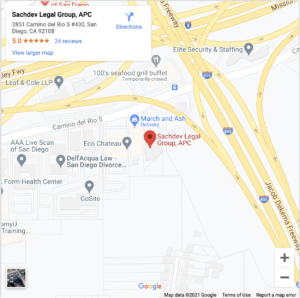Puja Sachdev | May 13, 2021 | Child Custody
Blended families are extremely common in the United States. According to the U.S. Census Bureau, over 3.85 million children live in blended homes across the country.
It is estimated that one out of every three Americans is either a stepchild, stepparent, or in some other form of a blended family. More than half of individuals will be a part of a blended family at some point during their lives.
For many children, their stepparent is their parent. They form a loving, close bond with their stepparent just as they do with their biological parent. In many cases, the other biological parent may not be a part of the child’s life.
However, the legalities of being a stepparent can be challenging. If a stepparent and biological parent divorce, what rights does the stepparent have regarding the child?
Stepparent Rights in California
In most cases, stepparents have very few legal rights regarding their stepchildren. For example, a step-parent can take a stepchild to the emergency room for care, but the stepparent does not have the legal authority to permit the doctors to treat the child. The biological parent would need to sign a consent form giving the stepparent that authority.
A stepparent typically does not have the authority to make any legal decisions for the child. Legal decisions would include issues related to education, religion, healthcare, and extracurricular activities.
A stepparent does not have legal rights to a stepchild, so they do not automatically receive visitation rights when they divorce from the child’s biological parent. However, the court may grant visitation in some cases.
Can a Stepparent Get Visitation Rights in California?
Under California Family Code §3101(d)(2), a stepparent is someone who is legally married to the child’s biological parent. If you are not married to the child’s biological parent, you do not have standing to request visitation rights.
According to §3101(a), the court may grant reasonable visitation to a stepparent. However, the court must find that the visitation with the stepparent is in the minor child’s best interest. Also, the visitation rights granted to a stepparent may not conflict with the custody or visitation rights of a birth parent.
A judge determines the best interest of a child by considering a variety of factors under Family Code §3011.
These factors include, but are not limited to:
- The age of the child
- The emotional relationship between the child and stepparent
- Any history or allegations of domestic abuse
- The emotional relationship between the child and the biological parents
- The health and needs of the child
- The length of the relationship between the child and the stepparent
- The parental relationship between the child and stepparent
The court can consider any factors that it deems relevant when deciding whether visitation with a stepparent is in the child’s best interest.
The court will consider the biological parent’s objections to stepparent visitation, if any. In most cases, the court will only go against the parent’s objections if the stepparent can prove through clear and convincing evidence that visitation with a stepchild is in the child’s best interest.
Other Ways for Stepparents to Obtain Legal Rights
A stepparent can obtain legal rights for a child by adopting the child. When a stepparent adopts a stepchild, the stepparent becomes the legal parent with all the rights of a biological parent.
In some cases, a stepparent may petition the court for legal guardianship of a stepchild. Legal guardianship does not terminate the biological parent’s rights. But it does give the stepparent the authority to make legal decisions for the child. Legal guardianship may occur in cases in which a biological parent is unfit or when a biological parent abandons a child.
Stepparents who wish to obtain legal rights or visitation rights with a stepchild should consult a family law attorney. A family lawyer can analyze the specific situation and provide guidance and advice regarding legal options for obtaining visitation rights with a stepchild.
For more information, call our law firm at (619) 866-3756 or reach out to us via email by visiting our contact us page.
